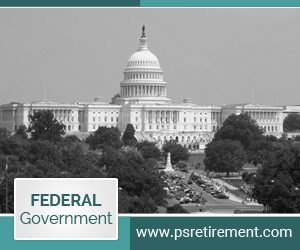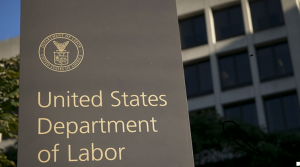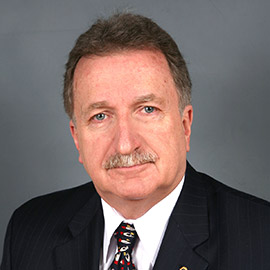Articles
All the latest articles covering the information that you will be craving to devour will be available via this category. From getting to know how indebted our company is to reading about the presidential elections; from knowing about new retirement plans to finding out how security breaches can affect your life; you can browse it all!
For more articles, visit our articles’ section.
Public Sector Retirement, LLC (‘PSR,’ ‘PSRetirement.com’ or the ‘Site’) is a news channel focusing on federal and postal retirement information. Although PSR publishes information believed to be accurate and from authors that have proclaimed themselves as experts in their given field of endeavor but PSR cannot guarantee the accuracy of any such information not can PSR independently verify such professional claims for accuracy. Expressly, PSR disclaims any liability for any inaccuracies written by authors on the Site, makes no claims to the validity of such information. By reading any information provided by June Kirby or other Authors you acknowledge that you have read and agree to be bound by the Terms of Use
Finding Financial Advisors for Federal Employees by Nelson Secretario
/by AdminAdvice for Federal Employees about Financial Advisors by Nelson Secretario
 Nelson Secretario – CLU, ChFC, LUTCF, ChFEBC, NSSA
Nelson Secretario – CLU, ChFC, LUTCF, ChFEBC, NSSAFederal employees have a special set of benefits that are available to them in terms of retirement income. While this can provide a nice advantage for these individuals, it can sometimes make it difficult when working with a general financial planner – especially when that planner is unfamiliar with how the federal retirement system operates.
While there are many well qualified financial professionals who can offer general retirement planning advice, when it comes to providing information that is specific to federal employees, it is therefore best to work with someone who is specifically focused in this particular area.
Where to Find an Advisor with a Focus on Federal Employees?
When searching for an advisor who has a focus on federal employees, you will want to ensure that he or she meets certain criteria. For example, in most instances, the advisor will advertise either on their website and / or other materials that they work with employees of the federal government.
In addition to having a “Fed” focus, you will also want to be sure that the advisor has an ample amount of overall experience – a minimum of ten years, as well as proper licensure. In this case, possessing a Series 7 securities license is a must. You can typically tell if a professional is securities licensed by noting whether or not they have “FINRA / SIPC” noted on their marketing materials.
Once you have found a good potential candidate for your needs, the next step is to contact the advisor and set up a meeting with them. As you will likely be working with the advisor for many years – and turning over a bulk of your life savings to them – it is essential that you are able to work together, and that you have trust in him or her as a professional.
You may even want to bring along some questions to ask the advisor, such as:
- What services to you offer?
- What are your professional qualifications?
- How are you compensated?
- Do you work alone or with a team?
- What licenses do you hold?
- Do you possess any additional professional designations?
While the process of finding the ideal financial advisor may take some time, once you have found one who is well qualified to work with you, and who you are comfortable working with, you will be able to successfully move forward towards your retirement goals.
More from Nelson Secretario
New Retirement Saving Tool that can Improve Your Retirement Benefits
/by AdminAlmost all individuals who are planning to have a comfortable retirement often seek the help of tools that can direct them. Principal, a financial planning company has made things easier for such people by recently launching Move to the Green Challenge. Any person, who is planning to retire, can participate in this challenge by using a financial wellness tool. It tells you whether you are saving enough for your retirement benefits or not.

How the Retirement Saving Tool helps in deciding the Retirement Benefits?
The retirement saving tool works by using a real-time savings graph, interactive sliders, and intuitive prompts. They will let you know how making a few simple changes can help you to have more financial security and a steady flow of retirement benefits.
The tool would also offer every user a personalized score that tells them whether they are on the right path or not. It also has red, yellow and green indicators. Everyone should aim for the green indicator as it means that you will get 70 to 85 percent of our current income after retirement.
The Previous Attempt
The company issued a statement that stated that a similar initiative was started last year and people liked it too. About one-third of people who participated last year increased the retirement plan deferral amount by 3.75% points to get 10% of pay. The statement also announced that there has been about 30% increase in the number of participants who made use of the plan and increased the deferrals since the launch of the Retirement Wellness Planner of the company.
Personalized Experience Helps
The Senior Vice President of Retirement and Income Solutions at Principal, Mr. Jerry Patterson recently stated that the idea of offering a personalized as well as interactive online experience plays a vital role in helping users understand how and where they can make better saving decisions. They are making use of the suggestions. He also added that saving more and earlier is the best thing all people can do to be well prepared for retirement.
The Benefits
People who take part in the Move to the Green Challenge would not only boost their retirement benefits, they have also got a shot at winning a few Plantronics BackBeat FIT wireless stereo headphones. If a person plans to try the challenge, it is not mandatory to have an existing retirement account with Principal.
Study Reveals 4 Stages of Retirement
/by AdminA recent study has revealed 4 stages of retirement enjoyed by every retiree. It includes the time just before retirement, time just after retirement and the time when the person has been retired for a few years. The study mapped the feelings and comments of retirees in each of these stages.

The Study on Stages of Retirement
The study was conducted by Age Wave and Bank of America Merrill Lynch. It was named Leisure in Retirement: Beyond the Bucket List and was conducted on more than 3,700 adults who were more than 25 years of age and came from all walks of life. The study focused on finding out hopes, dreams, priorities and challenges of leisure in retirement.
Stage 1
Stage 1 includes the people who were to retire in the next 5 years. These people were eager to retire, looked forward to it and wanted time for nonwork-related activities they enjoy. One respondent said that he was dreaming about all the fun things he can do after retirement. He added that thinking about these things made him excited.
Stage 2
In stage 2, the people who had retired were studied. About 78 percent of these people said that they now had time to do whatever they want. About 92 percent also said that they felt more free after retirement as they get to do whatever they want on their own terms.
Stage 3
When a person retires, he or she feels more relaxed after getting away from work. He or she also appreciates their leisure time a bit more. The retirees in this stage also feel happier, more content and confident. They lose the feeling of anxiety and get more comfortable with their post work identity. Some retirees also confessed that they felt a twinge of guilt when they failed to use their leisure time more productively. About 74 percent of retirees in this stage also admitted that they had the power to structure their free time more effectively when compared to stage 1.
Stage 4
The final stage in the stages of retirement analyzed the feelings of people who had been retired for more than 15 years. These retirees focus more on being healthy and maintaining their independence. They spent almost all of their leisure time in either connecting with their families or relaxing. Retirees in this stage spent most of their leisure time in doing tasks they were familiar with rather than trying out new leisure activities.
Getting Started Early for a Successful Retirement by Kevin Wirth
/by Kevin WirthKevin Wirth Explains How to Get Started Early for a Successful Retirement
Nearly everyone dreams about the day they can retire. Regardless of whether you plan to hike in the mountains, relax on the beach, or volunteer in a faraway place, one thing is for certain, and that is in order to have a successful retirement, a good plan should ideally be in place.
Unfortunately, though, not everyone has the opportunity to do an ample amount of long-term planning. That may be due to an unexpected health situation, an offer of early retirement, or some other event that has moved up the clock on your leaving the world of employment.
In any case, the good news is that you still have some options on your side for making the most of your finances, as well as your insurance benefits, for your retirement years. The best way that you can ensure success beforehand, then, is to start by taking a good inventory of what you’ve got.
Getting All of Your Retirement Ducks in a Row
As you plan for this next phase of your life, the most important aspects from a planning standpoint will include the following:
- Insurance – Because health care can be a retiree’s biggest expense, you will want to make sure that you have good coverage here. If you won’t be eligible for Medicare yet, and if being added to a spouse or partner’s employer-sponsored health plan also isn’t an option, then there are ways that you can take your FEHB (Federal Employees’ Health Benefits) with you – provided that you meet certain criteria. You will also want to ensure that you don’t leave your loved ones vulnerable to financial hardship when it comes to life insurance. So, be sure that you check into either an individual plan of coverage, or consider taking your FEGLI (Federal Employees’ Group Life Insurance) coverage with you in retirement.
- Financial – A good, solid financial plan is also an essential aspect of a successful retirement. This is because in order to live the lifestyle that you desire, you will need a way to replace your current income. Therefore, you should start by obtaining an approximation of how much you will be receiving from your retirement annuity when that time comes. If you’re covered by FERS, inquire as to how much income you’ll get from Social Security benefits, too. Because this income won’t likely be enough to completely replace your employer’s salary, you will also want to give yourself a boost by maxing your contributions while you still can to the TSP (Thrift Savings Plan). This will help you to obtain a larger amount of payout when the time comes to convert your savings into income down the road.
Once you have actually decided when the big day will be, you will want to get your retirement paperwork filled out in plenty of time. Typically, you should do so approximately two months prior to your actual date of retiring. This will help to ensure that all goes well – and just in case there are any glitches, you will have some time to get things straightened out and back on track.
More from the Author: Kevin Wirth
Kevin D. Wirth and Associates – Federal Retirement Experts
New York Worker’s New Minimum Wage and Paid Family Leave Policy
/by Matt Pierce
Reaffirming the commitment to better serve the interest of workers based in New York, including Governor Cuomo’s late father calls for economic justice, he signed a bill calling for a gradual increase in minimum wage, including up to 12-week of paid family leave.
The signing it into law is a growing momentum striking the balance for the workers’ competitive demands as well as the home. It will also transform the benefits landscape by increasing the federally-mandated minimum wage and make the workers as beneficiaries of the country’s strongest, longest, and most comprehensive paid family leave policy
The passing of the landmark legislation serves as both an extensive and relatively equalitarian model which definitely advocates hope for the workers. Such kind of hope will also influence other states and federal lawmakers to legislate work-related measures best suited for the changing economy.
Minimum Wage
The setting of the increase is based on the area of the trade or business where the worker is regularly employed. For example, at the end of 2016, the minimum wage ranging from US$9.00 per hour to US$9.70 per hour will be afforded to workers assigned in all counties of north Westchester County. For the rest of other areas in New York, the minimum wage is pegged at US$15.00 per hour which is remain unimplementable until and unless the new study be undertaken by the state supporting the rationale for the increase, including the need to prepare for a new indexed schedule. The minimum wage for tipped food service employees such as waiters would be based on the higher of the current tipped minimum or 2/3 of the state minimum wage. In addition, a tip credit equal to the difference between tipped and regular minimum wage will be given to tipped workers. In short, the law gradually raises the minimum wage over the next coming years will put the individual’s economic perspective in place, and more productivity growth to set in.
12-Week Paid Family Leave
Under the new paid family leave policy, any full-time and part-time worker is eligible to avail of the 12-week leave provided the worker has worked for at least six (6) months.
The 12-week paid family policy is the statewide mandatory leave which is on phased-in basis over the next coming years starting at the end of 2018. The worker is entitled to take time off from work for reasons such as to provide physical and psychological care necessary for the serious health condition of the family member, to set aside quality time with the child of the employee during the 1st 12 months reckoned from the child’s birth, place the child for adoption or foster care with the worker for the period of the 1st 12 months, and any qualifying exigency as contained in the federal family and medical leave act.
With the passage of the said law, the workers affected will be provided for the best benefits they truly deserve.
How to make your retirement savings last
/by Matt Pierce The government has always been very keen on encouraging the citizens of the country to save for retirement. The president has recently introduced another way to make Americans believe that saving for their post-retirement lives is an absolute must. The new myRA accounts allow employees to save up to around 15 thousand dollars in an investment plan that doesn’t even have any substantial fee and guarantees the payee, the principal too. There might be retirement crisis awaiting us in the longer run but this could prove to be a step in the right direction.
The government has always been very keen on encouraging the citizens of the country to save for retirement. The president has recently introduced another way to make Americans believe that saving for their post-retirement lives is an absolute must. The new myRA accounts allow employees to save up to around 15 thousand dollars in an investment plan that doesn’t even have any substantial fee and guarantees the payee, the principal too. There might be retirement crisis awaiting us in the longer run but this could prove to be a step in the right direction.
Manage your retirement savings properly:
As soon as 2020, the number of elderly officials that earn a meager income will increase rapidly as the retiree population reaches a gigantic figure of around 56 million. This means that there are going to be more poor people as the employees who reach 65 won’t have any place to go.
This is all because we don’t have a fulfilling plan available at our disposal. We need a plan that encompasses all our needs. As proposed by the New York Times, a guaranteed retirement account could be the way to go. According to this plan, all the officers will be able to make regular additions to this account which will then continue to add up until they reach their retirement age. It subsequently can pay out a great deal of money until the person or any of their beneficiaries dies.
The current system does have some good retirement savings plans but unfortunately none is good enough to match and cover the needs of each and every single employee. In this regard, if this proposed plan is given attention, and subsequently implemented, then it can go a long way in making sure that people save their retirement funds a lot more effectively.
Microsoft is suing the federal government
/by Matt Pierce
Microsoft has been known for its lawsuits over the years but their latest decision to sue the federal government is nothing that anybody could have predicted. The company based in Redstone believes that the federal law enforcing agents and their agencies prevent technological firms from declaring to their customers that their personal details (that Microsoft holds) is actually being monitored.
MICROSOFT TO SUE THE FEDERAL GOVERNMENT:
Microsoft believes that forcing companies to keep the access requests concealed is a straight denial of the constitution of the country which clearly states that the individuals of the country have every right to know whether the government is searching or taking control of their property.
Brad Smith who is the chief legal officer along with being the president said in a blog post this past week:
“This morning we filed a new lawsuit in federal court against the United States government to stand up for what we believe are our customers’ constitutional and fundamental rights – rights that help protect privacy and promote free expression. This is not a decision we made lightly, and hence we wanted to share information on this step and why we are taking it”
He further mentioned:
“The urgency for action is clear and growing. Over the past 18 months, the U.S. government has required that we maintain secrecy regarding 2,576 legal demands, effectively silencing Microsoft from speaking to customers about warrants or other legal process seeking their data. Notably and even surprisingly, 1,752 of these secrecy orders, or 68 percent of the total, contained no fixed end date at all. This means that we effectively are prohibited forever from telling our customers that the government has obtained their data.”
The case has already been brought to judiciary and public attention and it’s believed that the tech giant definitely have a lot that can be debated upon.
Americans happy with life, angry with the federal government
/by Matt Pierce
A poll recently done by the Associated Press-GfK has got some not so great findings for the federal government. Specifically, their reports indicate that American citizens are very happy with their friends, family and other relations, the only troubling aspect of their lives is their perception of the federal government.
AMERICANS ANGRY AT THE FEDERAL GOVERNMENT:
This is something backed by an official survey. Around 8 out of 10 Americans say that they are angry or discontent with the American government, and approximately the same number insists that they are happy with the lives that they are leading. Half of the GOP voters are angry; compare this with around 25 percent of the Democrats. Something maybe worth mentioning, most of these republicans support Donald Trump.
This anger is driven more by a dislike for the political system and less by political associations. The people believe that the system isn’t functioning as it should and they are very upset with both the parties equally. Some voters don’t even believe that the career politicians and the Washington insiders give their interests the top priority treatment.
Many interviews of angry voters were also shared after the surveys were made public, and the people expressed their frustrations just like they expressed their love for everything other than the government. The polls show that the Republicans that are absolutely distraught with what they are seeing don’t necessarily disapprove of Trump. There is a total of 58 percent discontented Republicans, but only 36 percent of them don’t really have praise for Trump.
While these stats and surveys don’t have any proactive repercussions, it’s believed that the federal government might take this to heart and do something good for the American people.
Are you a TSP user? Here is everything you need to know
/by Matt PierceThe Thrift Savings Plan, more commonly known as TSP is one of the most used and probably the greatest investment programs available to the federal employees and retirees. In this article, we intend to cover all the details regarding it that employees should ideally be aware of.
ALL YOU NEED TO KNOW ABOUT TSP:
The Thrift Savings Plan (TSP) is available to all of the FERS members along with the members of the Military Retirement system (MRS) and CSRS or the Civil Service Retirement system.
Just like any other private sector 401(k) or an IRA, you can make the choice between a Roth or a traditional tax treatment regarding your TSP account. If you choose the traditional option you will have to pay your taxes on the contributions and earnings only when you withdraw at retirement.
Most of the federal officers can become recipients of automatic contributions of around 1 percent and 5 percent of base pay of agency-matching contributions. Once we reach 2018, military personnel will also have this luxury.
If you are a member of the FERS, then after three years you will be able to vest in automatic contributions.
The cost of doing TSP business is really low. During 2015, per every grand invested, the cost would come out to be a meager .029 percent. Yes, a mere 29 cents. It’s safe to say that there isn’t a cheaper investment program out there.
The Thrift Savings Plan has enticed many federal officers to start investing over the years and it’s expected to constantly draw attention from employees who intend to make their retirement lives a lot easier and financially securer. We tried really hard to find any substantial downsides but failed. If you can think of any, let’s know in the comments!
What the new fiduciary rule has in store for you
/by AdminThe Department of Labor presented a new rule this past week that will require financial advisors who are handling retirement accounts to begin acting as fiduciaries. This fiduciary rule will imply that the needs and interests of the clients, be given first priority.

What The Fiduciary Rule Means To You
There are some questions though regarding the fee structure and retirement savings that employees would like answered. Here, we try to analyze those questions:
a) If you are not a financial advisor, will your life change?
This is the first question that must pop up in minds of everyone involved. How will the new Fiduciary Rule impact me? The answer takes heed from the fact that the new rule is focused primarily on retirement savings. Having said that, any point of contact you might have with an IRA, 401(k), Thrift Savings Plan (TSP), etc. will be impacted.
b) Is your financial advisor a fiduciary?
All the financial advisors that have the following designations: Certified Financial Planner or Registered Investment Adviser, are in fact fiduciaries, by default. Depending on a percentage of your assets, they will typically charge you based on the assets you hold with their firm or possibly a set hourly or yearly fee.
The story is different however if you have an IRA at a Brokerage Firm and your major interaction is with a person who works with you as a Salesperson or who offers advice which is solely ‘Suitable’ (which is the vast majority of financial professionals) vs. that which is truly in the clients best interest, the answer can be a bit different.
c) Will money be saved?
Lastly, if you were making your deals with an advisor who works on commission the new Fiduciary Rule may end up helping you a great deal, but the new rule does not go into effect for at least a year from the writing of this article so we’ll see how much actual impact the final Rule actually has.
Know the actual value of a FERS and TSP annuity
/by Matt PierceWhen we say that the majority of the federal officers will not have a million dollars (or more) in their TSP Accounts when they retire, we back our statement with facts. Researchers have revealed that only .5 percent of all the officers have over a million dollars in their TSP accounts.

KNOW MORE ABOUT YOUR TSP AND FERS ANNUITY:
When we talk about retirement income though, there is a huge possibility for the federal officers to generate the income that would absolutely have a requirement of possessing an investment portfolio of at-least, if not more than a million dollars. Let’s take an example. An employee that is a member of the FERS has around 30 years of service under his belt. His high three salary is 90 grand on average. If this person undergoes retirement at 62, then he would be receiving an annuity of around 29,700 dollars every year.
Now, the question here is this: How much will this person have to invest if he intends to generate 29 thousand and 700 in investment income? If we assume that the withdrawal of the account has a value of 4 percent, then the investment portfolio would have a value of around 742, 500 dollars.
Now if we consider that the person has collected around $400 thousand dollars in their TSP after spending 30 years in service. If he takes a 4 percent withdrawal every year during retirement, this would present him with a surplus 16 thousand dollars.
Now, between the FERS and the TSP annuity, the person would receive 45,700 every year, and if you are wondering, it would take around $1,142,500 dollars to generate that type of investment income.
All of this needs to be kept in mind along with the realization that the following deductions will no longer be there once you retire:
1. Medicare Tax
2. FERS Retirement
3. TSP
4. Social security taxes
OPM has had a break from the massive influx of applications
/by Matt PierceThe Office of Personnel Management or OPM has been dealing with a huge, never-ending wave of incoming applications in the past few months, bu during the month of March, that changed considerably.
OPM RECEIVES A BREAK FROM MASSIVE APPLICATIONS INFLUX:
During the first two months of the year, the organization reported record figures of applicants pushing their application forms on the OPM desks. When you consider the figure of 5,741 (Applications in March), you might think that it is a lot, however, it’s considerably smaller when you take into account the numbers from the past 2 months. Before March, the figures were very high for both January and February.
Apart from the influx decrease, OPM also managed to decrease their backlog substantially as around 9,200 applications were processed in March. The remaining applications now stand at 19,211 after seeing a 15 percent reduction from 22,962. It’s appreciable and of course worth mentioning that the number of processed applications also increased compared to that of the past 2 months.
When we take into account the numbers from the past few years, we observe a trend that’s quite similar; the backlog’s ebb and flow depicts a consistent pattern. That being said, the backlog after March 2015 was slightly heavier at 20,954.
This increase in the processing power is largely a result of the increased vigor that has been instilled into the employees of the organization; especially after the past few hiccups faced by the data breach and its repercussions. The influx of applications is expected to rise soon and we might see similar trends to last year. Here it’s hoped that the backlog keeps getting decreased quickly so that the applications of the waiting employees get processed before their expected time frames. We are certainly counting on OPM to do that.
How to be prepared while nearing retirement
/by Matt PierceOnce you are nearing retirement, you need to make the adequate preparations or you won’t end up…well, financially sound, to say the least. Today, we share 3 approaches that you can utilize and make your future secure once you make the transition from military.
The financial actions are not easy things to talk about but if you are nearing the time when you want to hang up your boots, you will need to perform three tasks. Here are those 3 tasks:
1. Budgeting:
Military people normally manage their budgets quite well. When you make the transition from military life to the civilian kind, you need to have at-least 6 or 12 months’ salary in your account to be able to make both ends meet. Yes, you might be able to find a great job soon but still the expenses that were covered before like child care, food and healthcare will have to be paid for now and you don’t want to be having your hands in your head at the time.
2. Save and invest
Military people are also generally good savers. Now is the time that you need to use your saving and your investing skills with aplomb. Try to save as much as you can, make contributions to your retirement savings plans or find other ways of investing. Just be aware that the money you have right now, can either be spent, or saved and doubled.
3. Protect:
Upon transitioning you also need to make a life insurance replacement. Within the first 8 months of leaving the military, you can convert your SGLI to a Veterans Group Life Insurance and there is no need for a medical exam either. You will most probably be able to get a great deal.
So, if you are nearing the transition, start planning ahead already!
Federal Government Foresees a Sicker USA Ahead
/by AdminA recent report released by the federal government has revealed that the man-made global warming issue will make Americans sicker in the future. The report also highlighted that mental health will also worsen due to the global warming. Experts believe that summers will be the worst season to bear and the government will need to take some measures to deal with the rising effects of global warming.
Details of the Federal Government Report
The report released by the Obama administration consists of 332 pages. It states that global warming will continue to make the food dirtier, the water contaminated, and the air impure. The report also says that diseases carried by mosquitoes and ticks will increase, allergy seasons will expand, and the death toll from heat waves will touch thousands.
Mental Health Affects
Gina McCarthy, Chief of Environmental Protection Agency was the one to release the report and she said that climate change would harm people’s mental health too. Global warming is just not about the melting ice caps and polar bears. It’s about the future of the Americans and their families as well.
Experts Speak
Surgeon General, Mr. Vivek Murthy has stated that the climate change now affects people in more ways than ever seen in the past by the doctors. He also added that this report would help the doctors to quantify the number of pathways through which climate affects the health of people. The pathways include air pollution that is worsening from wildfires, pollen and power plants. He also added that the poor quality of air makes it difficult to breathe and it’s scary for children as well as their parents.
The Dean of George Washington University’s public health school, Mr. Lynn Goldman seems to have seconded Murthy’s ideas when he said that Asthma, which is the topmost reason why children go to the hospital, is worsening due to more allergens and heat.
Summers are the Worst
Mr. John Holdren, White House science advisor stated that summers are the worst for people. Though there has been some reduction in emissions of heat-trapping gases, he says that the US still faces thousands of heat-related deaths every year. He also said that the state local or federal government is not making enough efforts to deal with the problem. He thinks that there is a huge gap between the seriousness of the problem and the response presented by the government health agencies.
OPM to Assess Excepted Service Staffing Activities
/by AdminOPM has recently announced that it will be accessing the excepted service staffing activities of the agencies to ensure that all the regulations are being followed. The emphasis would be on doing off-site work by using technology. This assessment would require all the agencies to cooperate in the best way they can.
Expectations of the OPM
The OPM expects the agencies in different ways. Sometimes the agencies would just need to provide some written policy guideline with regard to the excepted service staffing activities. On other occasions, the agencies may need to take part in the interviews and surveys. The agencies would also be required to offering access to all the records and case files pertaining to the excepted service hiring actions.
The Mapping Criteria
OPM has insisted that they would be accessing excepted service staffing activities in order to judge its compliance with the laws, merit system principles and regulations. Its effectiveness would also be analyzed. The law they want adhered to is the Title 5 of the U.S. Code; the general body of civil service law.
The key agency would also be focused on working off-site as much as possible. It will be making the most of the automated staffing systems, virtual conferencing, electronic surveys and employee personnel records. All these things were pointed out via a memo sent to all the agencies.
When Will the Accessing Begin?
OPM is currently focused on evaluating the data pertaining to its enterprise human resources integration system. The accessing of the excepted service staffing activities will begin only after the current analysis is wrapped up. OPM would shortlist the agencies to be covered and then contact the agencies to share more details of the accessing process.
Increasing Number of Excepted Services
OPM data has revealed that the agencies are making more of external hires via excepted service authorities when compared to hiring through competitive examinations. This trend has been ongoing over the last 10 years. The recent figures are also backing up this fact. In 2015, around 120,000 excepted service appointments were made. The number of competitive exam appointments during the same time period was only 113,000.
Exceptions to the Study
The study conducted by OPM would not include the hiring’s done as per the Pathways Program that hires students and fresh graduates as the number of excepted service appointments made in it are very low.
Federal Government Empowers Women as Small Business Owners
/by AdminWomen-owned small businesses are constantly on the rise. This change has helped the federal government award 5 percent of all contracts to them. This is an achievement for the government which is trying to reach this goal for the last 20 years.
The Announcement Made by the Federal Government
Administrator for the U.S. Small Business Administration (SBA), Maria Contreras-Sweet along with Nydia Velazquez (Congresswoman), Valerie Jarrett (Senior Advisor to President Barack Obama) and two other members made the announcement. They shared that the government has awarded 5 percent of the contracts to women-owned small businesses (WOSB) and the total worth of these projects amounts to 17.8 billion.
The Goal is Still Far Ahead
Contreras-Sweet also added that the achievement of five percent goal is just a foundation that needs to be built upon. She said that an SBA-commissioned study has exposed that though WOSB employs eight million American workers but still they lag behind in getting ample capital and contracts.
Hence, the SBA has announced to increase its categories. It now has 36 new industry categories where women can have the opportunity to win sole-source awards and set-aside contracts. This step would help expand the women-owned businesses, the jobs and new industries will be created.
Past Initiatives
The practice of empowering women-owned businesses is on the rise. Two key initiatives were launched in this regard. They are called Give Me 5 and ChallengeHER. The latter was initiated in 2013 by the Women Impacting Public Policy (WIPP). It aimed to ensure that women-owned small businesses participate in the Federal procurement process. Resources of WIPP, SBA, as well as American Express OPEN, were utilized to promote the initiative.
The other initiative, known as the Give Me 5 Program was a brainchild of American Express OPEN and Women Impacting Public Policy (WIPP). This program was aimed to make sure that women business owners get the knowledge necessary for applying and attaining government procurement opportunities.
What is WIPP?
It must be added here that WIPP is a unique national nonpartisan public policy organization that represents about 78 business organizations and 4.7 million business women. The organization works to ensure that working women and their businesses are empowered. It is done by providing a joint model for the private and public sectors. The organization even has a government relations team that helps them to interact with the federal government workers easily.
Figuring Out Your Federal Retirement Annuity by Jeff Boettcher
/by AdminFiguring Out Your Federal Retirement Annuity by Jeff Boettcher, AIF
 Jeff Boettcher
Jeff BoettcherHaving a plan for retirement is a must. This is because simply saving for the future, without any knowledge of what you will have available in terms of income, can be a recipe for disaster. It is essential to have at least an approximation of how much money you will have coming in for you to meet your living expenses.
This is especially important because, if there is a “gap” between what you will need for expenses and what you will have coming in, you will need time to plan for some type of additional incoming cash flow that can help you make up for that difference.
For those who are federal employees, there are ways that you can determine approximately how much retirement income you will be able to generate from your FERS or CSRS plan, depending on when you are eligible to separate from service and the type of plan that you have.
FERS Employees
For FERS (Federal Employees’ Retirement System) employees, benefit amounts can be calculated as follows:
- Immediate Unreduced Annuity – For those who will retire with an immediate, unreduced annuity, simply multiply 0.01 X your high-3 X all years and full months of service. However, if you have a minimum of 20 years of service and you will be retiring at the age of 62 or over, then you should substitute 0.011 for the 0.01 in the calculation.
- MRA + 10 Annuity – If you will be retiring at your minimum retirement age (MRA) and you have between 10 and 30 years of service, then you will have a reduction of 5% for each year that you retired before the age of 62.
- VERA (Voluntary Early Retirement Authority) – If an employee accepts a VERA, then he or she is able to retire at age 50 if they have at least 20 years of service, or at any age if they have at least 25 years of service. In this case, the annuity amount will be calculated by using the same FERS standard formula, yet without the 5% penalty for retiring at below age 62.
- Special Category Employees – Certain individuals such as firefighters, law enforcement officers, and air traffic controllers are considered to be Special Category Employees. Provided that they have put in at least 20 years of service, then they are eligible to retire. In this case, the annuity amount would be calculated by taking 0.017 X the high-3 X 20 years of service plus 0.01 X the high-3 X all additional years and full months of service.
Some individuals may also be eligible for the SRS, or Special Retirement Supplement. This is because Social Security benefits do not begin until at least the age of 62. Therefore, this SRS income will be provided until that time. In order to calculate one’s SRS benefit amount, take the estimated amount of Social Security benefit at age 62 and divide it by 40, then multiply this figure by the total years of FERS service. (Round the service figure up to the nearest whole number). The total here will be the dollar amount of the SRS monthly benefit.
CSRS Employees
CSRS (Civil Service Retirement System) employees will calculate their retirement benefits in a somewhat different manner than those of the FERS retirement system. In this case, the way to determine the amount of the CSRS annuity for regular employees entails multiplying (0.015 X the high-3 X five years of service) + (0.0175 X the high-3 X five years of service) + (0.02 X the high-3 X all remaining years and full months of service).
All other CSRS retirement benefit amounts would be determined as follows:
- VERA – If a CSRS employee accepts a Voluntary Early Retirement Authority, he or she may retire at age 50 if they have put in at least 20 years of service, or at any age if they have put in at least 25 years of service. If this is the case, then their annuity will be determined by using the standard formula for the CSRS annuity. If, however, the individual is under the age of 55 when they retire, then the amount of their benefit will be reduced by 2% for each year that they are under age 55. This equates to a reduction in benefits of approximately 1/6% per month.
- Special Category Employees – Certain individuals such as firefighters, law enforcement officers, and air traffic controllers are considered to be Special Category Employees. Provided that they have put in at least 20 years of covered service, then their annuity would be determined by calculating (0.025 X the high-3 X 20 years of service) + (0.02 X the high-2 X all additional years and full months of service).
No matter which area of service a federal employee retires from, if the individual still has any remaining hours of service that are leftover, these will be combined with their unused sick leave in order to create more months. These will then be used in computing their annuity benefits – which can make a difference in the total amount that is received.
Disclosure: All opinions represent the judgment of the author on the date of the post and are subject to change. Content should not be viewed as personalized investment advice or as an offer to buy or sell any of the investments discussed. Legal and tax information is general in nature. Always consult an attorney or tax professional regarding your specific legal or tax situation. BWM Advisory, LLC reserves the right to edit blog entries and delete those that contain offensive or inappropriate language. Content will also be deleted that potentially violates securities laws and regulations. Different types of investments involve higher and lower levels of risk. There is no guarantee that a specific investment or strategy will be suitable or profitable for an investor’s portfolio. All investment strategies have the potential for profit or loss. Hyperlinks on this website are provided as a convenience. We cannot be held responsible for information, services or products found on websites linked to ours.BWM Advisory, LLC is registered as an investment adviser with the SEC and only conducts business in states where it is properly registered or is excluded from registration requirements. Registration is not an endorsement of the firm by securities regulators and does not mean the adviser has achieved a specific level of skill or ability.
More from Jeff Boettcher
Understanding the Federal Employees Retirement System by Jeff Boettcher
The Importance of Proper Retirement Account Funding Strategies by Jeff Boettcher
Sources: http://www.psretirement.com/annuities/fers-annuity/
Federal Employees Face the Medical Theft Danger
/by AdminThe fraud cases of identity theft have become somewhat common these days. As people are getting smarter and preventing identity thefts, the hackers have started coming up with new forms of identity thefts. One of the latest threats facing the people, especially federal employees is the hacking of their Electronic Medical Records (EMRs).

The Breach of Federal Employees Data
Two massive breach incidents occurred only last year that highlighted the OPM’s inefficiency to prevent cyber attacks. The twin attacks made the data of over 21 million people vulnerable and the data included all vital details such as names, social security numbers, addresses, fingerprints as well as health and financial history. Though the agency is modernizing its systems to attain better IT security, the damage has been done.
Using Someone Else’s Health Insurance is Easy Now
One of the major types of medical identity theft is to use someone else’s name or health insurance for personal treatment. In such cases, a thief would use your identity to get benefits mentioned under your health insurance and you or your medical insurance provider would foot the bill.
Identity Theft of Hospital Patient Records is also possible
Another common medical identity theft includes hack of a computer system supporting a national chain of hospitals from which hackers can use the data and have endless opportunities to rob the patients, medical centers or insurance companies.
How to Protect Yourself from Medical Identity Thefts?
If you wish to prevent medical identity thefts, you need to make sure that you don’t disclose the medical data to someone you don’t trust. If you think a person who is claiming to represent your insurance company, doctor or your pharmacy is fake, you should ask for their name or extension and call the office to be sure they are who they claim to be. It would also be wise to keep your medical records in a safe place and shred the old ones rather than just crumpling and throwing them in the bin.
How to know if you are dealing with Medical Identity Theft?
No matter whether you come under the category of federal employees or not, you can detect the medical identity thefts by taking some simple steps. Firstly, you can start checking your medical bills to ensure that it does not include any fake bills. Secondly, you can keep an eye on the claims you have made till date and crosscheck them with the insurance provider so that no one gets the chance to put up a fake claim in your name.
Proper Retirement Account Funding Strategies by Jeff Boettcher
/by Admin[av_textblock size=” font_color=” color=”]
The Importance of Proper Retirement Account Funding Strategies by Jeff Boettcher

If you’re someone who may need to rely heavily on Social Security for your future retirement income, you may want to consider alternative saving methods.
Even if you are one of the lucky few, who are eligible for a Pension from your employer and regardless of how much you will receive from Social Security it is almost always advisable to have additional personal savings in place to secure a comfortable retirement. Although Social Security was created as a financial ‘safety-net,’ today’s reality is that most Americans see Social Security as one of their primary retirement vehicles and therefore have a substantial need to grow their own personal savings to fill in the future income “gaps” that are likely to exist.
One way to increase your future financial comfort and possibly take advantage of either tax-deferred or tax-free savings options is to open an Individual Retirement Account (IRA). By having an IRA, you may be able to defer your contributions from taxation. Any taxes owed on the growth that take place within of these types of accounts can also be put off until the future – or you may even be able to withdraw your funds tax-free depending on the type of IRA you choose.
Having a good overall understanding of the different types of IRA accounts that are available can make a big difference when choose the plan that is best for you, as well as when you make your contributions and you begin to make your withdrawals from the account.
Types of IRA Accounts
There are basically three different types of Individual Retirement Accounts. These include the deductible and the non-deductible Traditional IRAs, and the Roth IRA. While there are a number of similarities among these accounts, there are also several key differences, which may deem one or the other as more beneficial for various investors – depending on their situation, investment time frame, and goals.
Traditional IRA
The Traditional IRA has been in existence since 1974. For many years, this was the only type of IRA that was available. Today, the Traditional IRA can essentially be divided between a deductible and a non-deductible version.
In order to be eligible to contribute to a Traditional deductible IRA account you have to have at least some amount of earned income. If so, there are a number of nice advantages to taking part in this type of account, including:
- Tax deductibility of plan contributions (in full or in part, depending on how much annual income you earn, and whether or not you participate in an employer-sponsored retirement plan);
- Tax deferral of investment earnings.
For the years 2015 and 2016, those who are single tax filers are able to fully fund a deductible Traditional IRA account, provided that their income does not exceed $61,000 per year. If their income is between $61,000 and $71,000 per year, these individuals may partially fund this type of an IRA account. And, if they earn in excess of $71,000, then they will be unable to contribute at all.
If an individual is a married tax filer, and his or her spouse is also a participant in a retirement plan through their employer, then they are eligible to fully fund a deductible Traditional IRA account, provided that their annual income is under $98,000. This type of IRA can be partially funded if their income is between $98,000 and $118,000. However, if their income exceeds, the $118,000 threshold, then the deductible Traditional IRA cannot be funded.
For an individual who is a joint tax filer and whose spouse is not involved in an employer-sponsored retirement plan, a deductible Traditional IRA account can be fully funded if their annual income is below $183,000. This type of IRA can be partially funded if their income is between $183,000 and $194,000, but cannot be funded at all if their income is more than $194,000 per year.
[/av_textblock]
[av_one_half first min_height=” vertical_alignment=” space=” custom_margin=” margin=’0px’ padding=’0px’ border=” border_color=” radius=’0px’ background_color=” src=” background_position=’top left’ background_repeat=’no-repeat’]
[av_textblock size=” font_color=” color=”]
Non-Deductible IRAs
If an individual opts to go with a non-deductible IRA account (often called a Non-Deductible Traditional IRA), there are no income limitations when it comes to contribution to this type of account. There are, however, a few considerations to be mindful of in general when investing money into these types of accounts. Some of these considerations include the following:
- Maximum IRA Contribution Limit^ – First, when contributing to an IRA, there will be an annual maximum contribution limit. In 2016, that amount is $5,500 if you are age 49 and younger, and $6,500 if you are age 50 or over.
- Early Withdrawal Penalty^ – A Traditional IRA account will also subject investors to an early withdrawal penalty. This means that if you remove funds from your account prior to turning age 59 1/2, in addition to any taxes that you pay, you will also be subject to an additional 10% penalty from the IRS.
[/av_textblock]
[/av_one_half]
[av_one_half min_height=” vertical_alignment=’av-align-top’ space=” margin=’0px’ margin_sync=’true’ padding=’20’ padding_sync=’true’ border=’1′ border_color=’#a8a8a8′ radius=’3′ radius_sync=’true’ background_color=’rgba(195,201,221,0.7)’ src=” attachment=” attachment_size=” background_position=’top left’ background_repeat=’no-repeat’]
[av_textblock size=” font_color=” color=”]
About the Jeff Boettcher, AIF®
Helping clients grow and protect their wealth has been Jeff Boettcher’s passion since the 1990’s. Mr. Boettcher is also the owner and Co-Chief Investment Officer for BWM Advisory, LLC / Bedrock Investment Advisors, as well as owns and manages the Insurance Brokerage firm (IMO) of Bedrock Financial Services, LLC.
Specializing in Federal Retirees and small business owner retirement planning strategies along with being an expert in retirement income generation, Jeff Boettcher’s knowledge has been incredibly important to both his clients and the hundred-plus independent financial professionals who rely upon Mr. Boettcher’s various companies for the services and advice they need to help their own clients.
To Contact Jeff Boettcher you can visit www.BedrockIA.com or call 800-779-4183.
[/av_textblock]
[/av_one_half][av_textblock size=” font_color=” color=”]
- RMD Requirements^ – Based on the Required Minimum Distribution, or RMD, rules, those who own Traditional IRAs will be required to start withdrawing at least a certain amount from their accounts, beginning the years in which they turn age 70 1/2. If you do not comply with the RMD requirements, you could be penalized
- No Additional Contributions^ – When you turn age 70 1/2, you will also no longer be allowed to make any further contributions into your Traditional IRA account.
In addition, with the deductible version of the Traditional IRA, because your contributions have not yet been taxed, and the earnings inside of the account are tax-deferred, all of the withdrawals will be considered to be taxable income. With that in mind, the actual amount of money that is netted out of each withdrawal will depend upon your tax bracket at the time.
Side Note^: Distributions from your Tax-Deductible IRAs can increase the tax rate you pay on your Social Security Income. Therefore, although IRAs can be a great way of saving for retirement they can also have drawbacks and paying higher tax rates on your Social Security could be one of them.
Roth IRA
In 1997, investors were introduced to the Roth IRA. This plan, while it has some similarities to the Traditional IRA account, also has several key differences. First, with the Roth IRA, contributions enter the account after they’ve been taxed. Therefore, there is no tax deduction of deposits.
Another key difference with the Roth IRA is that the funds that are inside of the account grow tax-free^. The money can also, in most cases, be withdrawn on a tax-free basis. This can make a substantial difference in the amount of money that is netted out to the retiree / investor.
Unlike the Traditional IRA, there is also no RMD requirement. Therefore, the account holder will not be required to begin withdrawing funds from the account at age 70 1/2 – or at any age. Nor must they stop making deposits into the account at a certain age.
It is important to note that with a Roth IRA account, there is still a 10% IRS early withdrawal penalty by removing funds from the account prior to reaching age 59 1/2. However, if the funds that are withdrawn are the investor’s initial contributions, there will be no IRS penalty – regardless of the age of the investor as long as the deposits have met certain IRS limitations.
There are also income limits in terms of how much you can actually contribute to a Roth IRA. For example, the table below shows whether your Roth contribution will be impacted by the amount of your modified adjusted gross income:
| If your filing status is: | And your modified AGI is: | You can contribute: |
| Married filing jointly or qualifying widow(er) | < $184,000 | Up to the limit |
| Married filing jointly or qualifying widow(er) | >/= $184,000 but < $194,000 | A reduced amount |
| Married filing jointly or qualifying widow(er) | >/= $194,000 | $0 |
| Married filing separately and you lived with your spouse at any time during the year | < $10,000 | A reduced amount |
| Married filing separately and you lived with your spouse at any time during the year | >/= $10,000 | $0 |
| Single, head of household, or married filing separately and you did not live with your spouse at any time during the year | < $117,000 | Up to the limit |
| Single, head of household, or married filing separately and you did not live with your spouse at any time during the year | >/= $117,000 but < $132,000 | A reduced amount |
| Single, head of household, or married filing separately and you did not live with your spouse at any time during the year | >/= $132,000 | $0 |
Source: IRS.gov (https://www.irs.gov/Retirement-Plans/Plan-Participant,-Employee/Amount-of-Roth-IRA-Contributions-That-You-Can-Make-for-2016)
In addition, just like with a Traditional IRA account, Roth IRAs have annual maximum contribution limits. In 2016, these are also $5,500 for investors who are age 49 and younger, and an additional $1,000 for those who are age 50 and over.
For those who own both a Traditional and a Roth IRA, this does not mean that they are allowed to contribute these dollar figures into each of the accounts, but rather the total dollar amount – regardless of how the figure is allocated between the two.
Things to Keep in Mind
When considering the investment into an IRA, it’s important to keep in mind that you can make your prior year’s contribution through April 15th of the following year. In other words, if you have not yet made your 2015 IRA deposit, you can still do so through April 15th of 2016. And, by combining your 2015 and 2016 contributions, means that you could essentially put as much as $11,000 ($5,500 for 2015 and $5,500 for 2016) to work if you are age 49 or younger, or up to $13,000 ($6,500 + $6,500) if you are age 50 or over.
Putting all of the pieces of the retirement planning puzzle together can be difficult. That’s why it is important to work with someone who is not only knowledgeable about retirement, but also someone who is well versed in your specific retirement circumstances. For Federal Employees that means someone who has a background in your very complex retirement package and for small business owners it means someone who knows how IRS rules apply, not just IRAs but to other small business related retirement accounts as well. That way, you can be more assured that the options that you choose will work together in moving you towards your ultimate retirement goals.
Understanding Federal Employees Retirement System – by Jeff Boettcher
Jeff Boettcher Author Page
[/av_textblock]
[av_one_full first first min_height=” vertical_alignment=’av-align-top’ space=” margin=’0px’ margin_sync=’true’ padding=’20’ padding_sync=’true’ border=’2′ border_color=’#bababa’ radius=’10’ radius_sync=’true’ background_color=’#dfdeea’ src=” attachment=” attachment_size=” background_position=’top left’ background_repeat=’no-repeat’]
[av_textblock size=” font_color=” color=”]
About Jeff Boettcher, AIF®
Helping clients grow and protect their wealth has been Jeff Boettcher’s passion since the 1990’s. Mr. Boettcher is also the owner and Co-Chief Investment Officer for BWM Advisory, LLC / Bedrock Investment Advisors, as well as owns and manages the Insurance Brokerage firm (IMO) of Bedrock Financial Services, LLC.
Specializing in Federal Retirees and small business owner retirement planning strategies along with being an expert in retirement income generation, Jeff Boettcher’s knowledge has been incredibly important to both his clients and the hundred-plus independent financial professionals who rely upon Mr. Boettcher’s various companies for the services and advice they need to help their own clients.
To Contact Jeff Boettcher you can visit www.BedrockIA.com or call 800-779-4183.
Disclosure. All opinions represent the judgment of the author on the date of the post and are subject to change. Content should not be viewed as personalized investment advice or as an offer to buy or sell any of the investments discussed. Legal and tax information is general in nature. Always consult an attorney or tax professional regarding your specific legal or tax situation. BWM Advisory, LLC reserves the right to edit blog entries and delete those that contain offensive or inappropriate language. Content will also be deleted that potentially violates securities laws and regulations. Different types of investments involve higher and lower levels of risk. There is no guarantee that a specific investment or strategy will be suitable or profitable for an investor’s portfolio. All investment strategies have the potential for profit or loss. Hyperlinks on this website are provided as a convenience. We cannot be held responsible for information, services or products found on websites linked to ours.BWM Advisory, LLC is registered as an investment adviser with the SEC and only conducts business in states where it is properly registered or is excluded from registration requirements. Registration is not an endorsement of the firm by securities regulators and does not mean the adviser has achieved a specific level of skill or ability.
State retirement plans a good bid for future
/by AdminState run retirement plans have been among the news for quite some time now and the ever increasing excitement pertaining to the efforts made by the states to set up these private employer plans is really something that’s worth being a part of or knowing about, at the least.
State-run retirement plans a go?
 These plans are in fact things that the majority of the population could be looking forward to. When you look at it from the general perspective, these retirement plans could go on and aid the millions of workers in the private sector who don’t enjoy financial stability to have something to look forward to after retirement.
These plans are in fact things that the majority of the population could be looking forward to. When you look at it from the general perspective, these retirement plans could go on and aid the millions of workers in the private sector who don’t enjoy financial stability to have something to look forward to after retirement.
Another side of this story is that this could create a mess. A really unavoidable, unwanted mess. The states are although very enthusiastic to make the move but their ability when it comes to running (After effectively creating) an employee benefit plan can be questioned. When you look at it this way, you can also expect every state to go on and develop its own retirement plan, which also can turn out to be a cumbersome situation.
The Pension Rights Center claims that around 25 of the states have been devising some sort of plan for the general population. Most of these plans involve the employers deducting money from the pay checks just like in a 401(k) plan. Minnesota is a name that comes to mind. The Management and Budget Agency of the state is busy trying to propose a private sector retirement plan. They could come up with one as soon as March, as indicated by a spokesperson.
While these plans could go a long way in making lives of the private sector employees better, the concerns regarding the decision of approval are also very important. Let’s hope that whatever transpires benefits the majority.








